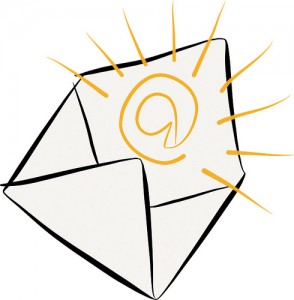An effective email campaign means navigating through spam filters and scoring high conversion rates among readers. Mission impossible? Not if you carefully craft each email marketing component.
Your target audience
You’re recipients have given you permission to initiate contact. That breeds familiarity with what they want. Knowing your target audience not only means having a name in the salutation, but knowing the information they seek. Do they want to invest, do they want entertainment deals? Is your reader planning on going back to school?
Your recipients should be segmented, ensuring that you aren’t blanketing everyone, but sending readers something that piques their level of interest. Segmenting can be done via the contact’s level of engagement with your business: Is it the first time you’ve sent them information? Is this a follow-up?
Don’t bombard recipients with excessive emails. They should be carefully timed, with new information, updates and deals. Don’t send emails with the word “reminder” in the subject line.
Beyond your basic subject and from line
Keep your subject line clear and concise with a strong call to action. Anything generic is out. Eliminate exclamation marks, dollar signs, all caps, coy questions and spammy phrases like “free” or “act now”. If your subject line is misleading, people can end their annoyance with a single click. Keywords should be placed at the beginning of the subject line. Keep this line as short as possible — don’t forget, people often check their email on mobile devices. Tell people what you want them to do: attend, download, meet or join. Be honest and make it enticing.
Use the “from” line to indicate to your reader who’s on the other side of the email. Your readers want familiarity. Consumers may open your email because they know your brand or because the from line reminds them of the information they’re interested in.
Landing in the right spot
If you’ve successfully held the attention of your reader with your subject line, from line and content, they may respond to your call of action. If they click through, they’ll find themselves at your landing page. The landing page must reinforce the email’s design, style and message. You want your reader to feel confident they’ve arrived at the right place.
A good landing page lets the visitor know exactly what they need to do in order to take the next critical step in the conversion process. Convince them to become a member of your site, pitch them a clever sales incentive, promote a partner’s product or sign them up for a subscription. If you need information from your reader, be as brief as possible. Nothing will lose a customer faster than asking them to hand out personal information screen after screen and announcing to them that they’re almost done. Above all, don’t bait and switch your readers, or they’ll leave.
Once you’ve produced your marketing email, test its effectiveness. Research firm MarketSherpa breaks down how companies test their email marketing campaigns, with the subject line getting tested the most at 72 percent of the time. All components to your email campaign, however, need to be successful to win over your readers. Without testing and refining, you’ll never know what works and when and you’ll be left with just guesswork.


